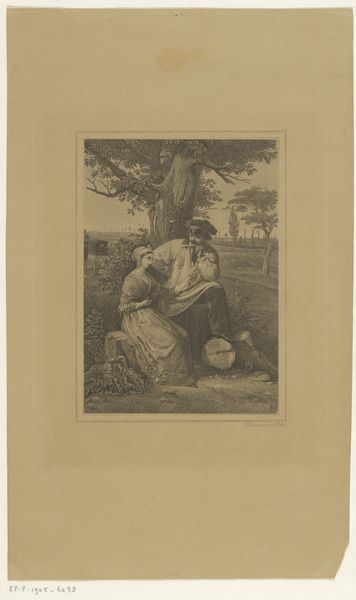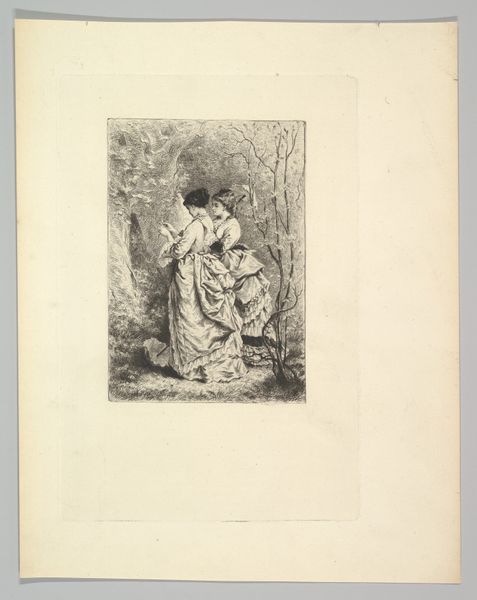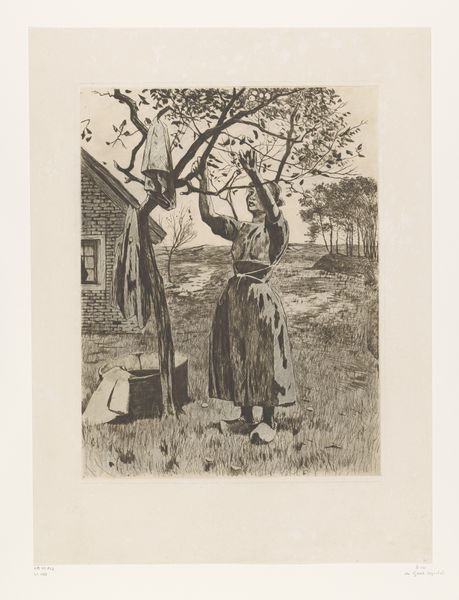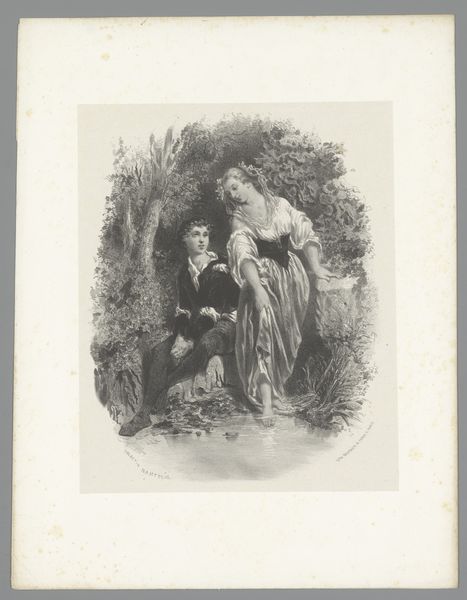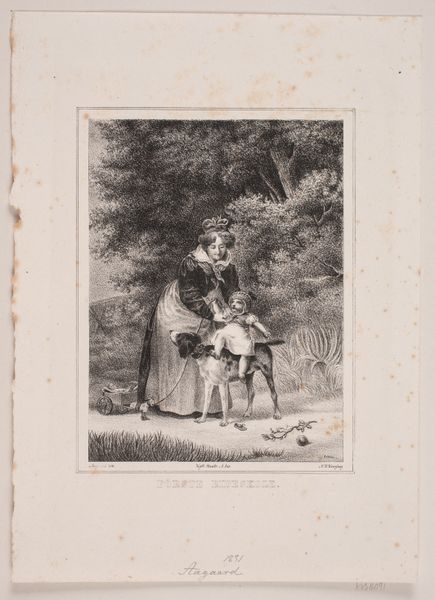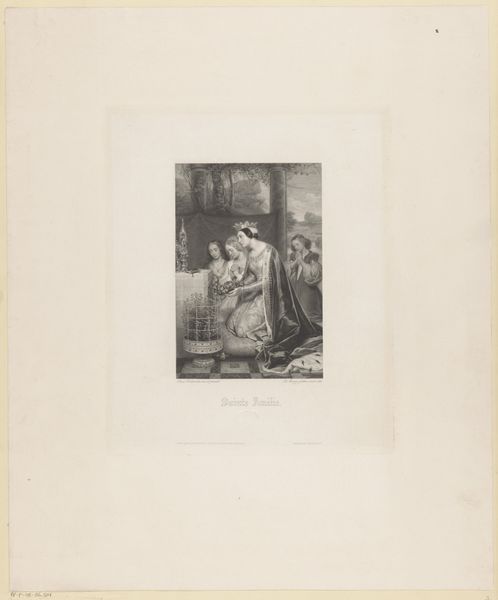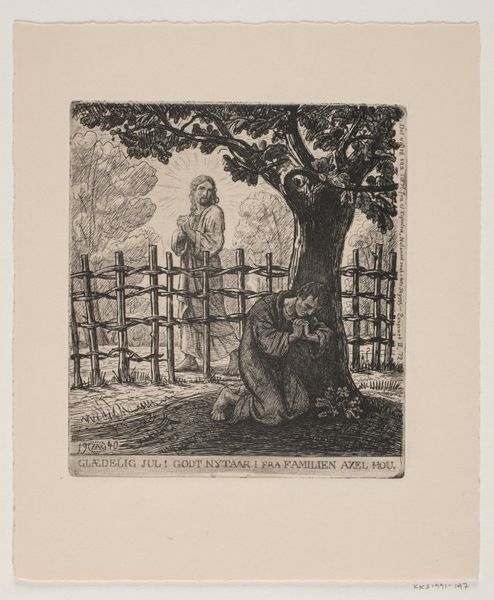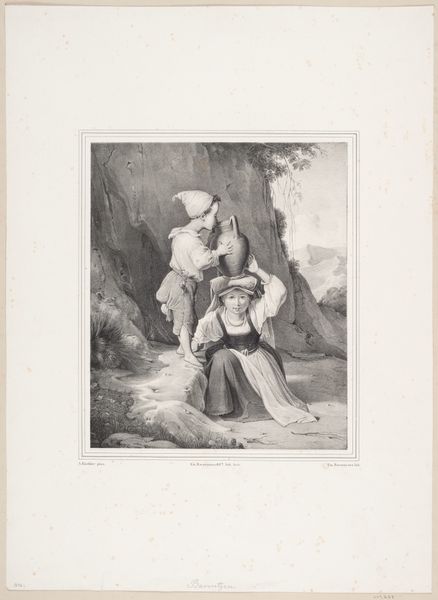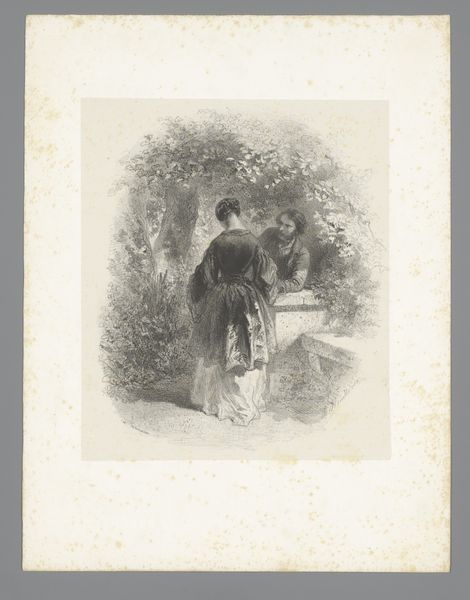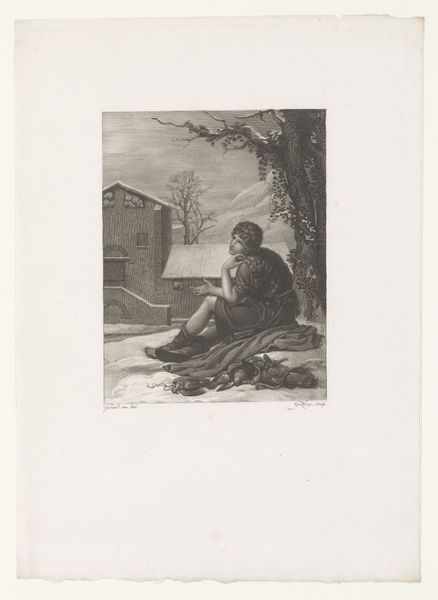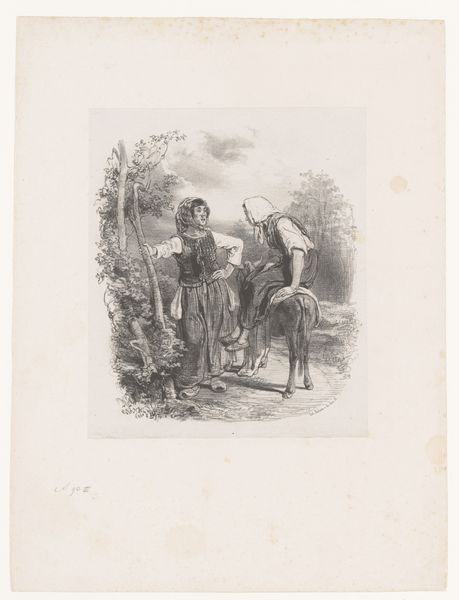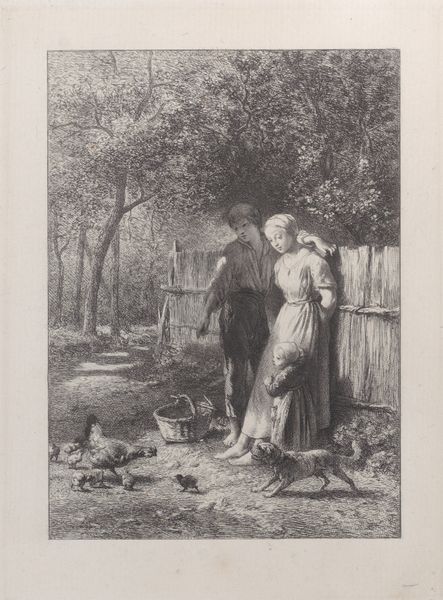
drawing, print, etching
#
portrait
#
drawing
# print
#
etching
#
landscape
#
figuration
#
genre-painting
#
realism
Dimensions: height 379 mm, width 280 mm
Copyright: Rijks Museum: Open Domain
Curator: Looking at Hendrik Adriaan Christiaan Dekker's etching "Boerin in landschap met twee kinderen", dating roughly from 1846 to 1905, one sees an interesting tableau. Editor: It feels incredibly intimate, doesn't it? Almost like overhearing a quiet moment in the countryside. All in muted tones, but rich with texture. It reminds me of memories half-forgotten, hazy like a dream. Curator: Precisely. Consider the historical context: this work offers a glimpse into the lives of rural women, mothers who were also laborers, their realities often unseen within dominant historical narratives. The use of etching emphasizes a commitment to realism, portraying their everyday existence without romanticism. Editor: Absolutely, you feel the weight of her life etched into every line of her posture. I mean, even the sunflowers seem weary, leaning as if mirroring her resilience. Do you feel like it hints at the Madonna figure in religious painting? It gives me a pang in the gut. Curator: An interesting take. One might argue Dekker challenges traditional depictions. Where a Madonna emphasizes the sacredness of motherhood, here we see labor and quiet endurance. The genre painting element also suggests a break from purely religious or historical grand narratives, toward the importance of ordinary lives. Editor: Yeah, and there’s this strange power in choosing etching to present the subject, the delicacy coupled with precision—making the ordinary sublime! Maybe it's about elevating women, making us notice what patriarchy typically casts aside. Curator: I think your reading touches upon a core aim of intersectional criticism: excavating hidden value and empowering the invisible. This work pushes against erasure by simply bearing witness. Editor: Makes you wanna offer that tired boerin a cup of something warm. Makes you think twice. Anyway, after seeing that I'm going to go be nicer to all the mothers that I know. Curator: A good note to end on: to see, to empathize, to act. That’s the hope of socially engaged art history.
Comments
No comments
Be the first to comment and join the conversation on the ultimate creative platform.

